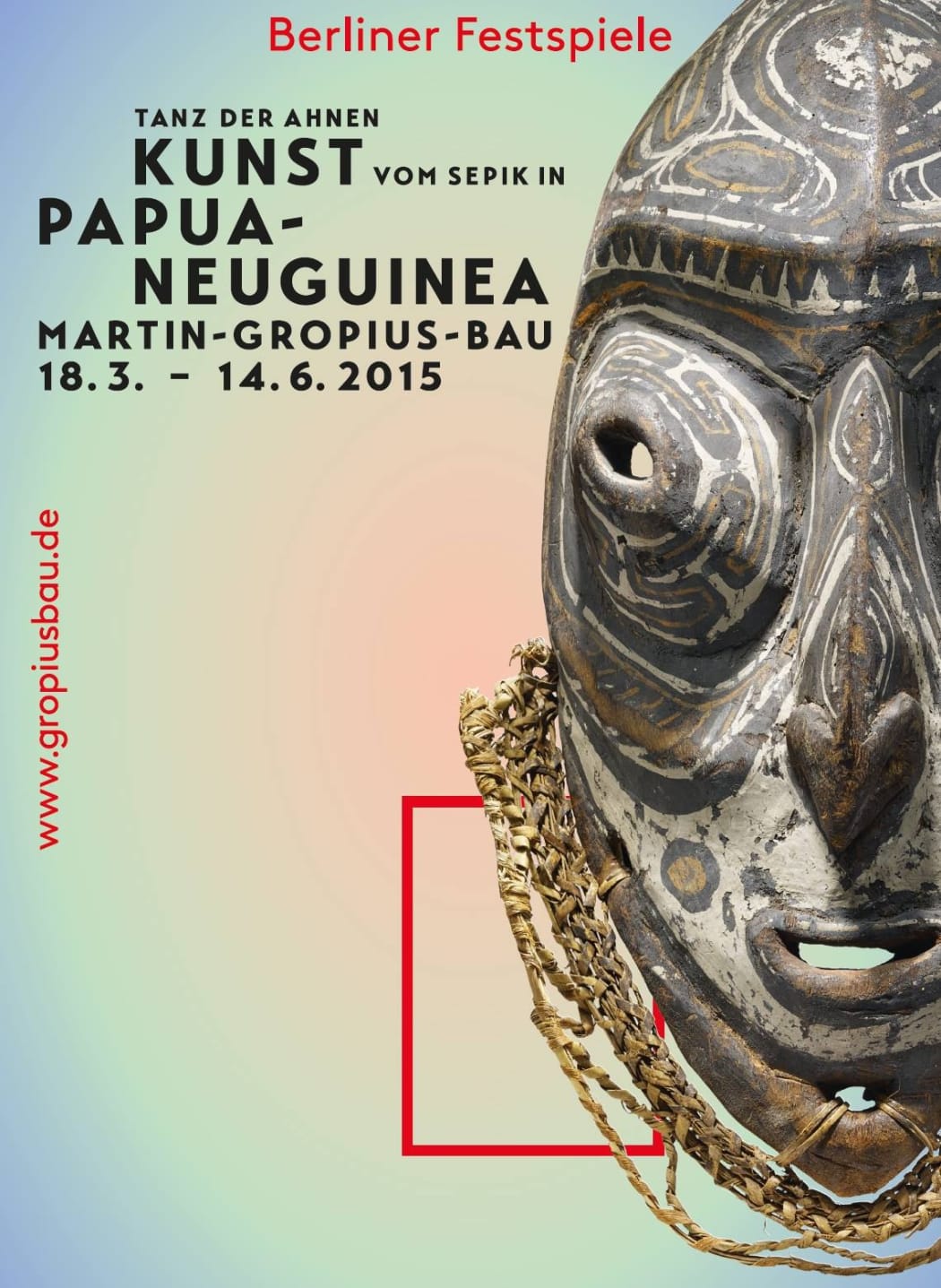
One of the highlights of my recent trip to Berlin was the new Sepik exhibition that had just opened at the Martin-Gropius-Bau (info). Tanz der Ahnen – Kunst com Sepik in Papua-Neuguinea brings together 220 objects – all from European museums, with the largest number coming from the former museums of ethnology in Basel and Berlin. There are no objects from private collections and additional items come from the museums of Munich, Stuttgart, Frankfurt, Cologne, Bremen, St Augustin, Dresden, Lübeck, Rome, Paris, Cambridge and Leiden. The majority of the exhibited objects was collected before the first World War, so this is obviously a once in a lifetime opportunity to see so much ancient Sepik art in one place. The exhibition is curated by Markus Schindlbeck, from the Berlin Ethnologisches Museum and Philippe Peltier, of the Musée du quai Branly. It runs in Berlin until 14 June 2015, travels to Zürich’s Rietberg Museum from 10 July to 4 October 2015 and has its last stop at the quai Branly museum in Paris. Everything you want to know about this exhibition you can find in the press release.

Besides the objects on view, I also loved the structure of the exhibition itself: the tour starts with the Sepik river (being projected behind two magnificent giant canoes – see below), from where you continue to the village with dwellings and the presentation of the latter’s inventory of utensils featured in the life of women, children and uninitiated men. Then a dance ground opens up before the visitors, dominated by the men’s house. The tour explores the inside the house and the ritual objects kept there. Masks and musical instruments used at initiations mark the transition to the world of initiated men, who formerly did not become full-fledged members of society until they had become warriors. The ancestors finally manifest themselves in diverse shapes. Every villager could transform himself into an ancestor and they appeared on the dance ground with the adornments worn by the forebears, recreating and re-enacting mythical times.
A fitting end for this tour would have been the display of some of the beautiful over-modeled ancestor skulls known from the Sepik region, but these unfortunately remained absent from the exhibition – I missed them. Although they will certainly be present in the featured museum’s collections, I guess the curators chose not to display ‘human remains’ out of political correctness. Personally, I find this rather peculiar, since all the old reports from the region make it clear that the Sepik themselves often had no problems selling these skulls – paradoxical the exhibition even shows an old field-photo of a Sepik man offering two over-modeled skulls for barter. I now regret not having photographed it – but visitors were not allowed to make photographs anyhow ! I made the photograph below at the entrance and then got stopped.. so if you’re interested, you’ll have to visit the show yourself – it is highly recommended.
ps simultaneously, there’s also a great ZERO exhibition at the Martin-Gropius-Bau – and there one can take as many photograph as one wants :)
